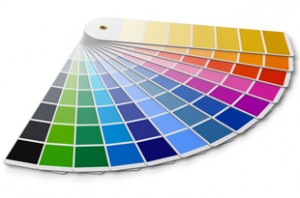2013
 The CMYK colour model is the colour printing process used by many print companies, and it refers to the way in which cyan, magenta, yellow and key (black) are aligned and mixed to create an entire range of colours. In essence, these four colours are the baseline for the spectrum; that being said, it is important for printing firms to use machinery that keeps them in perfect alignment in order to avoid errors in the printing process. Have you ever wondered how colour printing works? Many people never think about it, yet most of us print numerous pages every day. CMYK operates by masking the four colours on a light background, and it’s degree of masking that is performed which allows printers to produce full spectrum colours. The background is typically white; when the ink is printed it works to reduce its reflection/brightness.
The CMYK colour model is the colour printing process used by many print companies, and it refers to the way in which cyan, magenta, yellow and key (black) are aligned and mixed to create an entire range of colours. In essence, these four colours are the baseline for the spectrum; that being said, it is important for printing firms to use machinery that keeps them in perfect alignment in order to avoid errors in the printing process. Have you ever wondered how colour printing works? Many people never think about it, yet most of us print numerous pages every day. CMYK operates by masking the four colours on a light background, and it’s degree of masking that is performed which allows printers to produce full spectrum colours. The background is typically white; when the ink is printed it works to reduce its reflection/brightness.
It will be helpful to know the difference between the CMYK and RGB colour model in order to understand how it works; the latter is considered an additive colour model, in which red, green and blue (primary colours) are mixed to create secondary colours. CMYK, on the other hand, is considered a subtractive model in that it takes away from wavelengths of light when printed, i.e. the white backdrop. While the results are pretty much the same, it should be noted that print operators typically use CYMK over RGB when they need to produce deeper shades of black, unsaturated and darker colours. The subtractive model tends to be more cost-effective as well.
It will be helpful to know the difference between the CMYK and RGB colour model in order to understand how it works; the latter is considered an additive colour model, in which red, green and blue (primary colours) are mixed to create secondary colours. CMYK, on the other hand, is considered a subtractive model in that it takes away from wavelengths of light when printed, i.e. the white backdrop. While the results are pretty much the same, it should be noted that print operators typically use CYMK over RGB when they need to produce deeper shades of black, unsaturated and darker colours. The subtractive model tends to be more cost-effective as well.
How the Separation Process WorksGiven that the colours used in the CMYK model work to reduce the reflection of the white background, how do they end up creating secondary colours? Print operators use a variety of screens and filters to control the degree of separation, and most companies in the industry do this via digital software (in contrast to the traditional use of photographic film which is more costly and time-consuming). The result is four distinct images that are transferred to printing plates; when finally printed onto paper, the secondary colours are created. In order to avoid errors in the printing process, operators need to maintain the proper total area coverage (TAC) of the paper or object. This is the total value of the CMYK inks and it is generally capped at 300%. Listed below are some of the benefits of using this model vs. additive types like RGB.
The Benefits of the CMYK Model- The use of black allows operators to clearly print fine details without blurring, which can be difficult to do with additive models when working with certain font types.
- CMYK prevents ink bleeding, as the presence of black prevents the cyan, magenta and yellow process colours from fully saturating the printed surface. It consequently decreases the drying time.
- CMYK is cost-effective; black ink is not as expensive.
 Recent Posts
Recent Posts
- 5 Things to Consider When Packaging Food
- How Does Hot Foil Stamping Work?
- 5 Tips for Monochrome Packing
- How To Choose The Right Boxes For Your Business
- What Type of Information Is Legally Required for Package Design?
 Categories
Categories
- Announcements
- Company Information
- Frequently Asked Questions
- General Category
- Goldrich
- Newsletter Articles
- Product News
- Testimonials
Deprecated: Function wp_list_cats is deprecated since version 2.1.0! Use wp_list_categories() instead. in /home/goldpakcom/public_html/wp-includes/functions.php on line 6121
 Archives
Archives
- March 2015
- February 2015
- January 2015
- December 2014
- November 2014
- October 2014
- September 2014
- August 2014
- July 2014
- June 2014
- May 2014
- April 2014
- February 2014
- January 2014
- November 2013
- October 2013
- September 2013
- July 2013
- June 2013
- May 2013
- April 2013
- March 2013

 Proudly Canadian Since 1953
Proudly Canadian Since 1953